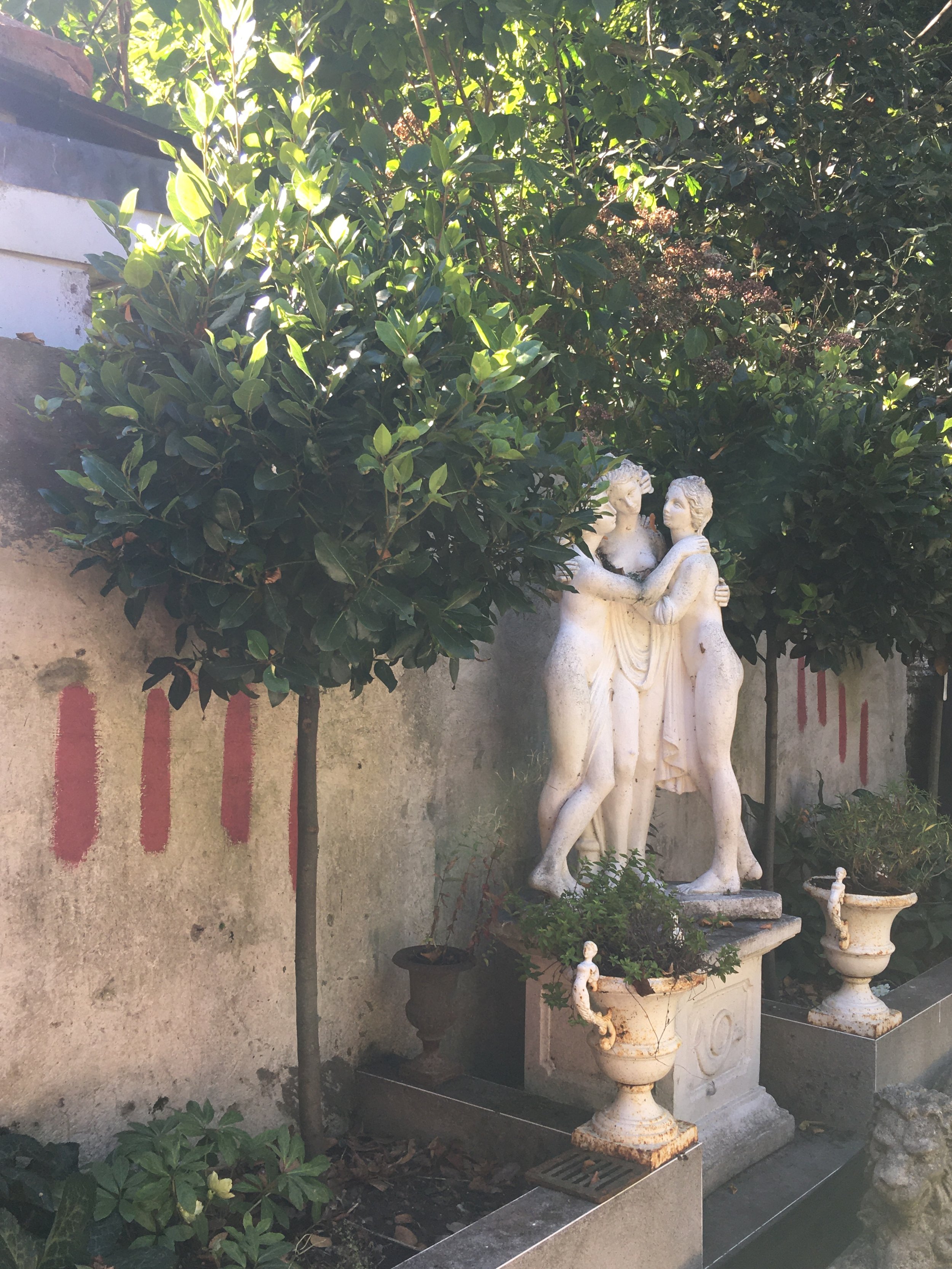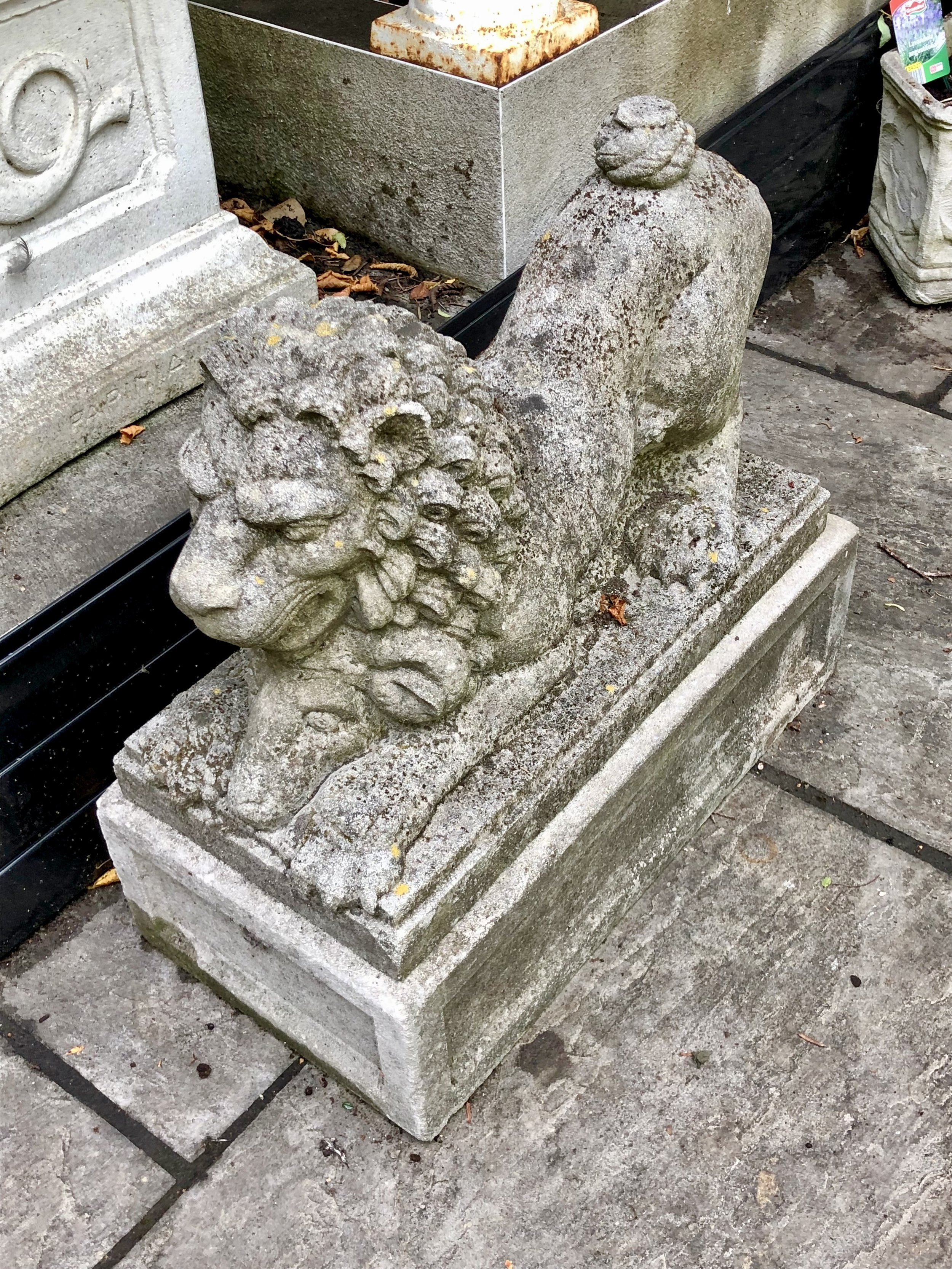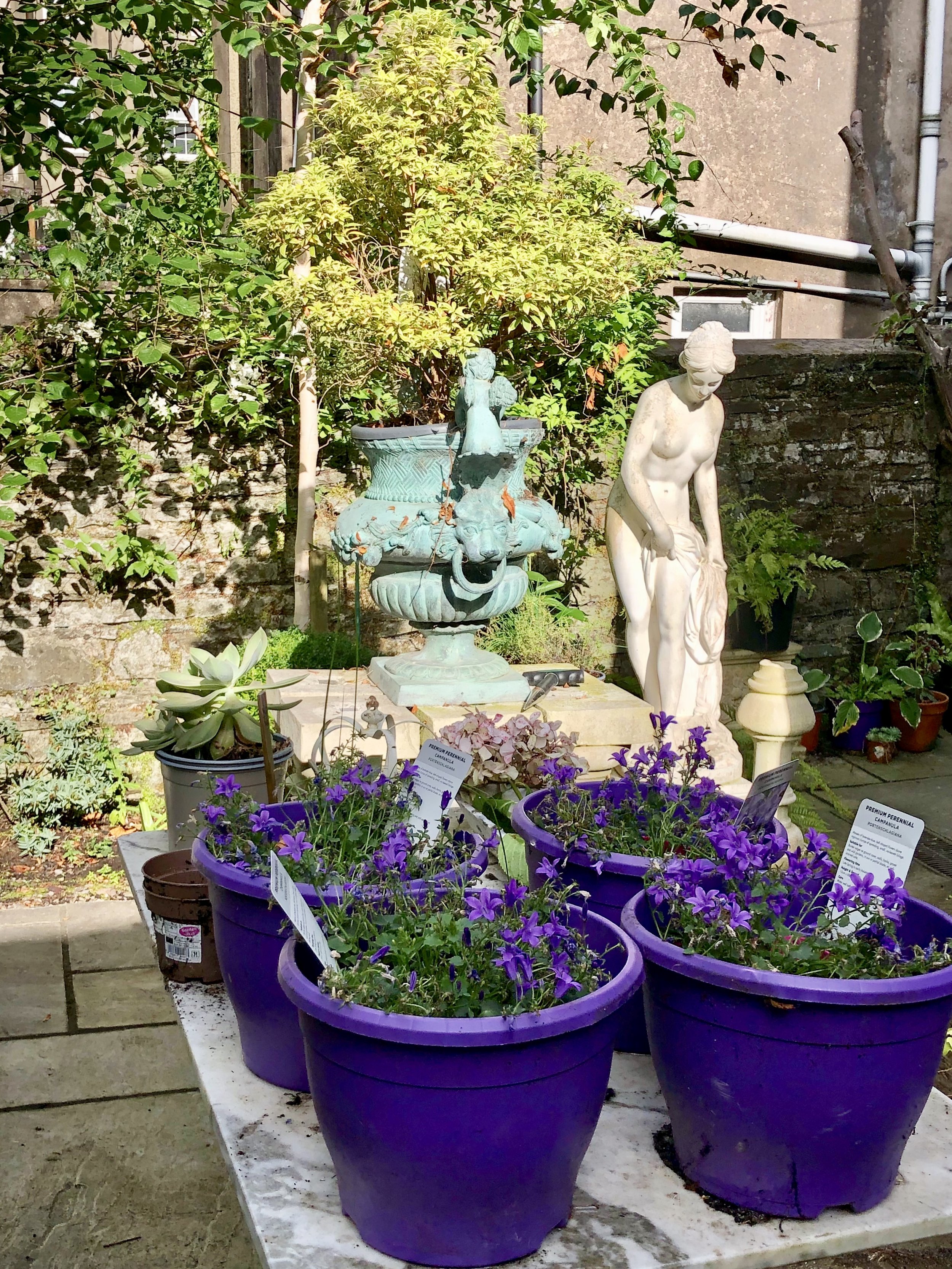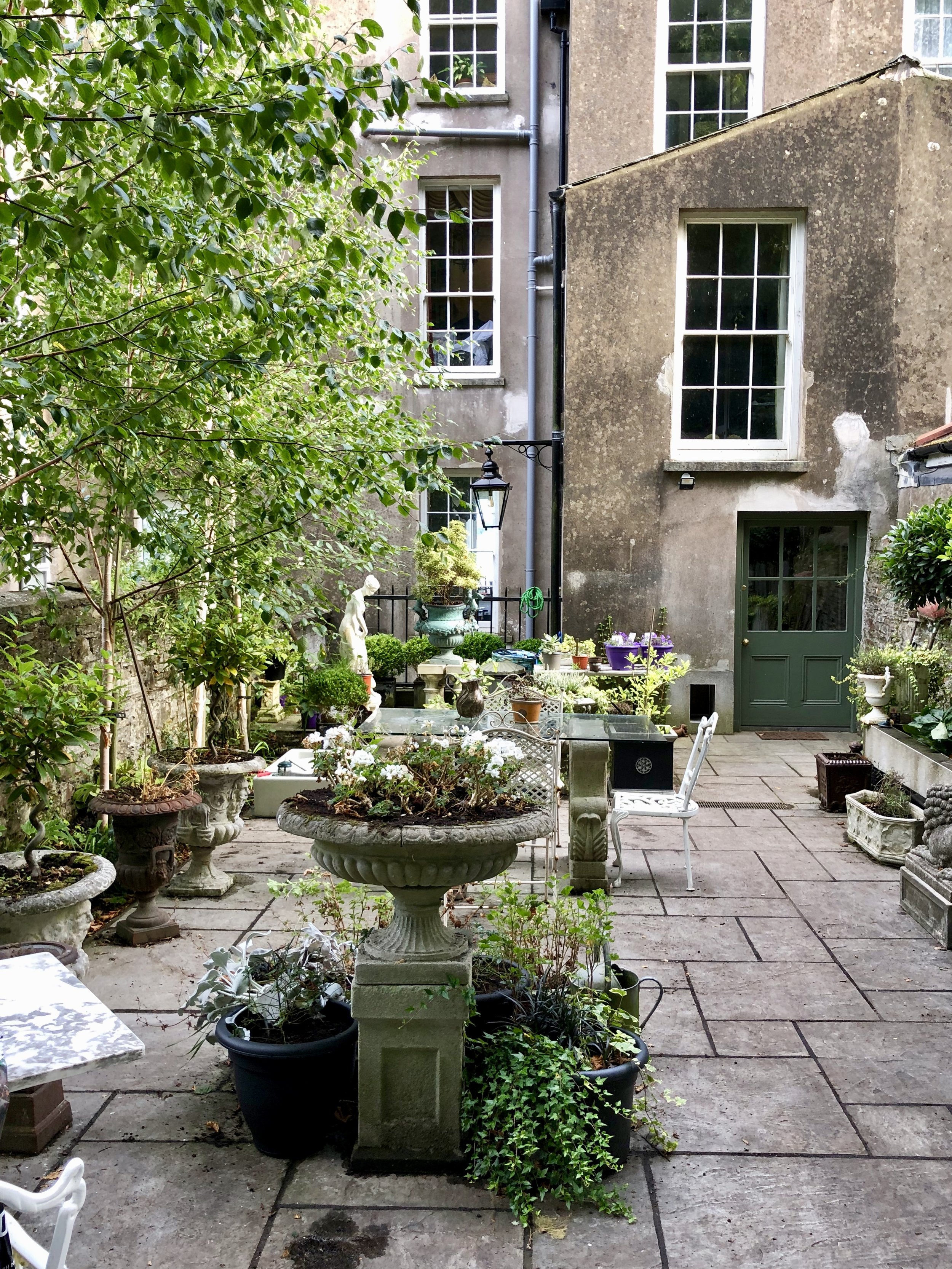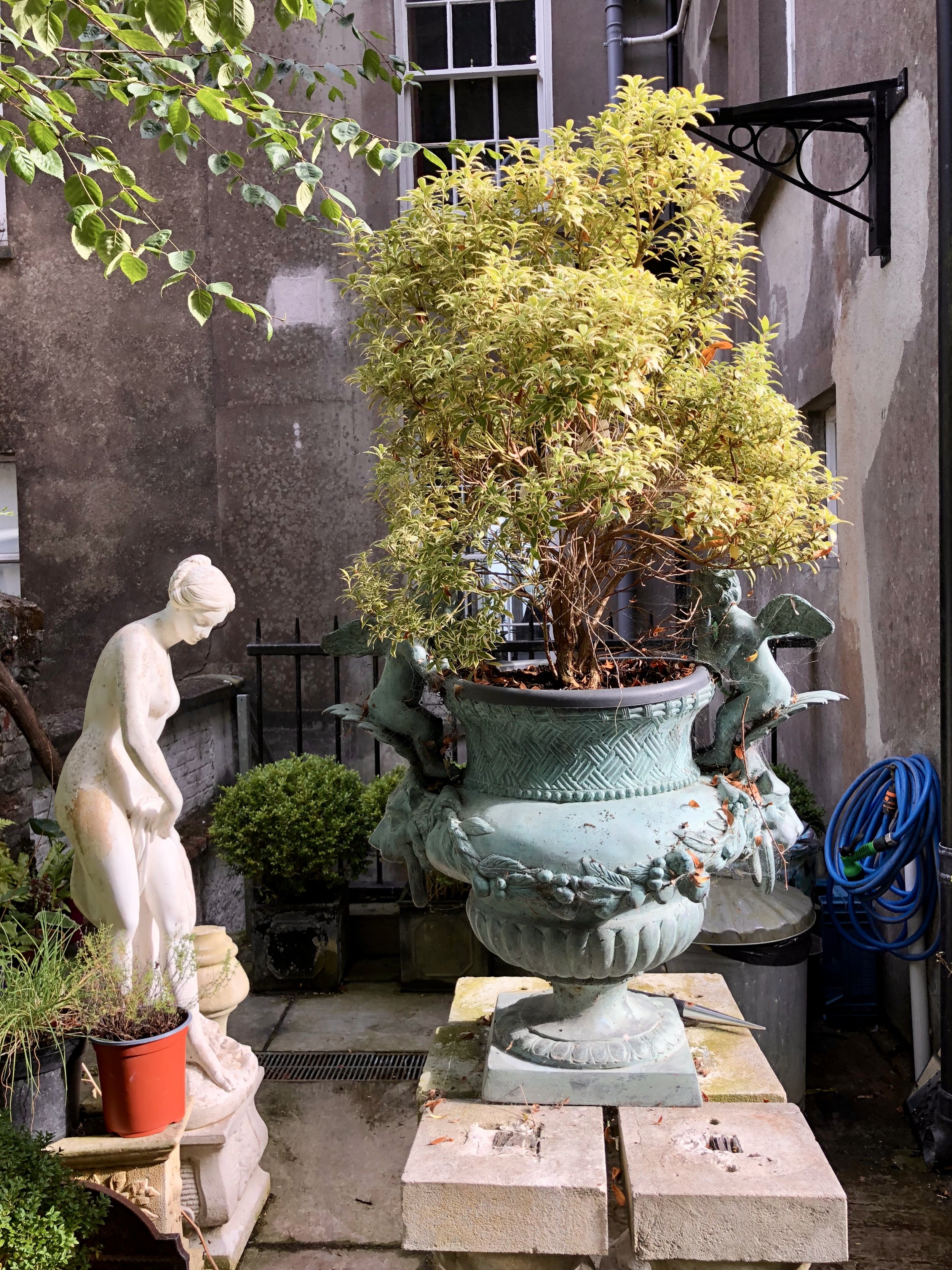95. A Cobh Garden
I have been in Cobh, Ireland for the past week, staying with an old friend at her beautiful Georgian guest house overlooking Cobh harbour. We have been friends for many years; working, playing and partying in London before our lives took us in different directions: hers to Cobh and mine to Parkgate. Mary has a brilliant eye for design and decoration but is definitely not a gardener, so I had promised to help her to plant up her garden in Cobh.
West Beach House is a guest house on the Cobh waterfront, nestling below the cliffs above it. It used to be the main Cobh Garda (police) station and still had the superintendents office in the back garden when they purchased it. The garden is at the back of the house: a typical Georgian long narrow town garden overshadowed by buildings and the cliffs at the back, a deep light well to the basement, lovely original slate walls that are typical of this part of Cork and some less attractive concrete structures. The garden had been used as a builders yard during the house renovations, and needed a complete overhaul. The structural stages of work on the garden have taken two years to complete but the garden is now (finally) at the planting stage.
Step 1 was to plant a row of single stemmed Himalayan silver birch trees (betulis jacquemontii Snow Queen) to provide some dappled shade and improve the privacy of the garden. They are small enough for town gardens and create a lovely screen. This row of trees was planted in 2016 and they are now well established, but the bed below them needs attention. Many of the original potted plants were brought from Mary’s London garden to Cobh in 2015.
Step 1: Silver birch trees
Step 2 was to create a second raised bed along the opposite, more shaded wall. This was done in 2019 using concrete - the beds are very deep with plinth sections to display Mary’s statues. They have been planted with topiary bay trees and box balls and the “The Three Graces” takes pride of place on the central plinth between them. The bay trees have survived well, but the box plants have succumbed and need replacing.
Step 3 was to pave the garden with irregular sized flagstones that work well with the architecture. Mary’s husband came across some lovely old brass grilles / drains at a local auction house and they have incorporated these into the paving as drainage channels. They remind me of the old grilles you find in New York City.
Step 4 was to convert the old superintendent’s shed at the bottom of the garden into a Garden Studio for guests. There was a lot of work required to do this: extensive damp proofing and drainage, protection from water and debris coming down off the cliffs, a new roof with a domed rooflight, new plumbing and electrics installed. These were all required before the space could be fitted out as a bedroom with ensuite bathroom and a tiny kitchenette. The end result is a very comfortable Garden Studio with doors leading straight out into the garden.
Step 4: The Garden Studio
For many of our London years Mary and I were regulars at the Greenwich Auction* Saturday morning sales and garden ornaments were always her favourite things to buy. We acquired many treasures - it was rare that we came away empty-handed, and her large collection of classical statues, decorative urns and pots acquired over the years are now a main feature of this garden.
During lockdown Mary has been adding planting to the garden in an ad-hoc way, but not all the plants are suitable for the conditions, and many have not survived their first flowering season. Each section of the garden only gets sun for a few hours each day so we have decided on a planting scheme of greens and whites, using different textures and heights and shapes to provide interest in the planting. Everything will need to be shade tolerant.
The north-east facing wall with its raised beds has been planted with the bay trees, white lenten roses (helleborus) and masses of white cyclamen (cyclamen coum and hederofolium). This should provide year-round foliage and white flowers through the autumn / winter months from October to March. The plants are low maintenance, tolerant of dry shade and will hopefully naturalise and spread, covering the planting space. we have added decorative features: her collection of four matching white urns, the stone planters below the raised beds which are filled with white lavender (augustifolium) and the Chinese lion at the base of The Three Graces, another Greenwich Auction find.
The stripes on the wall were Mary experimenting with different paint colours. The jury is still out on if / which colour to use.
The south-west facing wall has the five silver birch trees planted in the longer bed - this creates six “sections” to be planted up. The planting plan will be in keeping with the classical style of the garden: symmetry is important, and the plants chosen to make sure there is something of interest all year round.
Sections 1 and 6: a large white mop head hydrangea to punctuate each end of the bed with some white broom and white lily turf (liriopes).
Sections 2 and 5: plants with spiky flowers at different heights: delphiniums, foxgloves, alliums, agapanthus, welsh onions, bleeding hearts, peonies and lots of bulbs.
Sections 3 and 4: variegated Fatsia “Spiders Web”, white hebes, Japanese anenomes
There should always be something in flower: snowdrops in January, narcissi in February, daffodils in March, alliums in April, tulips and foxgloves in May, delphiniums, bleeding hearts and hebes in June, hydrangeas and agapanthus in July / August / September, dahlias, liriopes and Japanese anenomes in October, white broom in November / December. We will build up the planting in this bed over the next few months.
Many of the plants will be evergreen and maintain their leaves in winter. The white flowers will work well with the greenery and the shade. With different heights, leaf shapes, flower shapes and shades of green it should make an interesting display of patterns and textures to complement the lovely old grey slate walls.
The central main paved section of the garden will be given over to seating areas and groups of decorative urns and pots. An old marble sewing table is closest to the back door - this will be used for new incoming plants and for planting up cuttings etc, The next section has a lovely large urn planted with white heather and variegated ivy to create a winter display. To each side of the urn are large ceramic pots with a scented magnolia stellata planted in each, they will have stunning white flowers in the spring. The main seating area with the glass table is for outside dining.
There is another small seating area for guests by the Studio at the end of the garden. It is surrounded by decorative urns and pots: hydrangeas, scented geraniums, Californian lilacs and helleborus. We will be adding a tall flagpole cherry tree (Prunus Amanogawa) in a large pot by the wall and there is a wisteria being trained along the wall to each side of the Studio door.
It is very peaceful sitting in the garden listening to the sound of St Colman’s Cathedral bells chiming. The overall effect is of a classical Italian style garden where you are surrounded by soothing green planting, birdsong and Mary’s collection of interesting statues and garden ornaments. It is a lovely space that will have year round interest and is just beautiful to look at.
Greenwich Auctions finally closed down in 2021 after 20+ years of trading. Bob and his family team are sorely missed. Some of our best treasures came from there.












